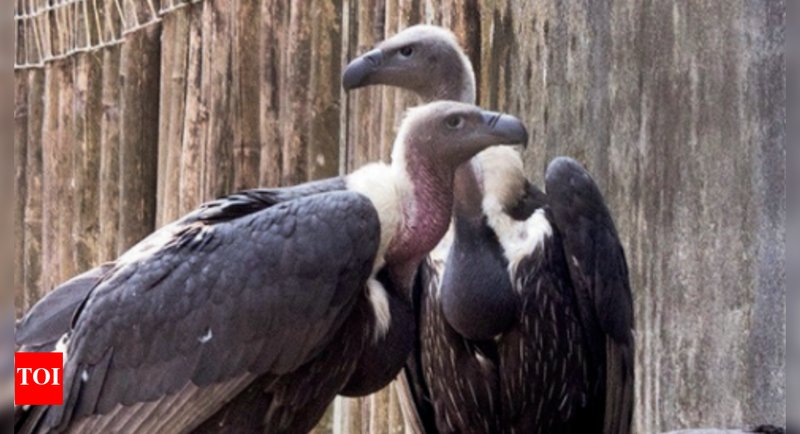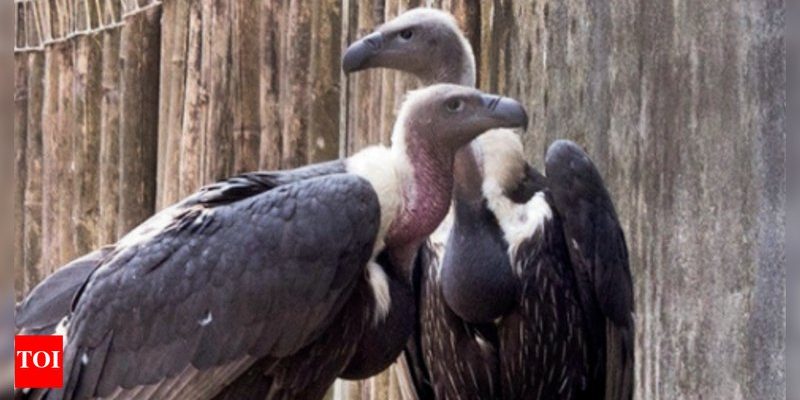
Introduction to the Indian Vulture
The Indian Vulture, a stunning bird of prey, often captures the imagination of those who encounter it. With its impressive wingspan and unique characteristics, this vulture is not just a scavenger but also a vital part of its ecosystem. Imagine walking through a forest or a sprawling grassland and catching sight of this magnificent bird soaring gracefully above. There’s something almost regal about the way it glides through the air, effortlessly adapting to its surroundings and showcasing the beauty of nature.
However, the Indian Vulture faces significant challenges today. Habitat loss, poisoning, and the decline of their food sources have put these incredible creatures in jeopardy. If you’re curious about what makes the Indian Vulture so unique and why its conservation is crucial, you’re in the right place! Let’s explore the fascinating world of this bird, from its characteristics to its importance in our environment.
Physical Features
The Indian Vulture is easily recognized by its distinct appearance. These birds can grow quite large, with a wingspan that can reach up to 2.6 meters (about 8.5 feet). Their bodies are covered in fluffy feathers, which can vary in shade from brown to a lighter gray. One standout feature is their head, which is often bare and wrinkled. This adaptation helps them stay clean while feeding on carcasses, as feathers can trap bacteria.
Another physical characteristic includes their powerful beak, which is designed for tearing flesh. The beak is hooked and strong, enabling the vulture to rip apart even the toughest hides. Furthermore, their sharp eyesight allows them to spot food from great distances. They can soar at heights of over 10,000 feet, searching vast landscapes for their next meal, all while conserving energy.
These impressive features make the Indian Vulture a master of survival in the wild. The combination of size, strength, and keen eyesight equips them for their role as scavengers.
Habitat
The Indian Vulture primarily inhabits open and semi-open areas. These can include grasslands, scrub forests, and even urban environments where they can find food. You might spot them soaring high above fields or perching on trees and cliffs. They prefer habitats that provide easy access to their main food source: carrion. This makes areas with livestock farms particularly appealing.
In terms of geographic distribution, the Indian Vulture is found mainly in the Indian subcontinent, particularly in countries like India, Nepal, and Pakistan. Unfortunately, their habitat has been shrinking over the years due to urban development and agricultural expansion. Protecting these natural habitats is crucial for the survival of the Indian Vulture, as it allows them to thrive and fulfill their role in the ecosystem.
Diet
The diet of the Indian Vulture primarily consists of carrion or dead animals. They are nature’s clean-up crew, helping to dispose of dead animals that could otherwise spread disease. Their keen sense of smell, combined with their excellent eyesight, allows them to locate food sources from miles away. This scavenging behavior is critical for maintaining the balance in their ecosystem.
Interestingly, Indian Vultures are somewhat selective eaters. They prefer larger carcasses, such as those of cows, deer, and other sizable mammals. Once they locate a carcass, they may take turns feeding with other vultures or scavengers. This communal feeding not only helps them find food but also plays a role in their social behavior.
Despite their scavenger diet, Indian Vultures are at risk due to the decline in their food sources. When livestock are treated with certain veterinary drugs, like diclofenac, it can lead to fatal consequences for these birds. This phenomenon highlights the importance of understanding how human actions can have ripple effects on wildlife.
Behavior and Social Structure
The Indian Vulture has a fascinating social structure. They are often seen in groups, especially when feeding. These gatherings can be quite a spectacle, with multiple vultures circling overhead and then landing together to feast. This social behavior isn’t just for food; it also provides an opportunity for the birds to bond, communicate, and even display courtship behaviors.
In terms of communication, Indian Vultures often make various vocalizations. You might hear hisses or grunts as they interact with one another. Their social nature helps them maintain relationships within flocks, which is essential for their survival. In fact, these connections can influence how they learn about food sources and navigate their environment.
During breeding season, Indian Vultures perform elaborate courtship displays. Males will engage in aerial challenges or show off their flight skills to attract females. Once paired, they typically mate for life and work together to raise their young. They build their nests high in trees or on cliffs, providing a safe environment for their chicks to grow.
Conservation Status
Unfortunately, the Indian Vulture is currently classified as critically endangered. Their population has plummeted dramatically in recent decades, primarily due to habitat loss, poisoning, and a decline in food availability. Once abundant, their numbers have dropped by over 90% in parts of their range, leading to urgent conservation efforts.
One major threat to these birds is the use of certain veterinary drugs in livestock. Drugs like diclofenac can be toxic to vultures. When they feed on treated carcasses, it can lead to kidney failure and death. Awareness and regulatory changes surrounding these medications are crucial for protecting the Indian Vulture population.
Conservation organizations are working tirelessly to raise awareness about the plight of these majestic birds. They promote safe livestock management practices and habitat preservation. Public education is also vital. By understanding the importance of vultures in our ecosystem, we can take steps to protect their future.
Interesting Facts
Here’s a quick table summarizing some fascinating facts about the Indian Vulture:
| Scientific Name: | Gyps indicus |
| Wingspan: | Up to 2.6 meters |
| Diet: | Carrion (dead animals) |
| Lifespan: | Up to 30 years in the wild |
| Habitat: | Open and semi-open areas, grasslands |
| Range: | Indian subcontinent (India, Nepal, Pakistan) |
Each of these facts highlights the unique features that make the Indian Vulture such an important species in their habitat.
The Indian Vulture plays a vital role in maintaining the health of ecosystems. As scavengers, they help to clean up the environment and prevent the spread of disease. Their impressive physique and social behavior make them captivating creatures to observe and learn about. However, with their populations dwindling, it’s crucial that we take action to protect them.
By fostering understanding and awareness regarding the threats they face, we can work together to ensure that future generations get to witness the beauty of the Indian Vulture soaring through the skies. Next time you think about vultures, remember the larger story they represent — one of ecological balance, survival, and the importance of protecting our wildlife.
FAQ
What is the main threat to the Indian Vulture?
The Indian Vulture faces several significant threats, with the primary one being the use of the veterinary drug diclofenac. This medication, used to treat livestock, is highly toxic to vultures. When they feed on the carcasses of treated animals, it can lead to kidney failure and death. As a result, their populations have drastically declined. Habitat loss and reduced food availability also pose serious challenges to their survival.
How can we help protect Indian Vultures?
Protecting Indian Vultures involves a collective effort. You can start by raising awareness about their plight and supporting conservation organizations that focus on their protection. It’s also essential to advocate for the discontinuation of harmful veterinary drugs, like diclofenac, that threaten their health. Additionally, supporting habitat preservation efforts can help ensure these birds have safe places to thrive.
Where can I see Indian Vultures in the wild?
Indian Vultures can be found in various habitats across the Indian subcontinent. They prefer open and semi-open areas like grasslands and scrub forests. If you’re looking to observe them, consider visiting national parks or wildlife sanctuaries in India, such as Sariska or Keoladeo Ghana National Park. Keep an eye out for their impressive wingspan as they soar through the sky.
How long do Indian Vultures live?
Indian Vultures have an impressive lifespan, often living up to 30 years in the wild. Factors like availability of food, environmental conditions, and threats from humans can affect their longevity. In protected areas with ample food sources, they tend to live longer and healthier lives.
Do Indian Vultures migrate?
Typically, Indian Vultures are not migratory birds. They stay in their habitat throughout the year, provided that food sources are available. However, they may move to different areas in search of carrion if their local food supplies become scarce. This flexibility in movement helps them adapt to changing environmental conditions.
What does an Indian Vulture’s nest look like?
Indian Vultures build their nests in high locations such as cliffs or tall trees. The nests are typically made from sticks, grass, and other materials readily available in their habitat. They create a sturdy platform to ensure the safety of their chicks during the early stages of growth. The nesting process is a crucial part of their life cycle.
How do Indian Vultures contribute to the ecosystem?
As scavengers, Indian Vultures play an essential role in maintaining the health of ecosystems. By consuming dead animals, they help eliminate potential sources of disease and bacteria, effectively cleaning up the environment. Their presence is vital for nutrient cycling, as they contribute to the decomposition process, promoting soil health and plant growth.
Are there any conservation programs specifically for Indian Vultures?
Yes, several conservation programs focus on protecting the Indian Vulture and its habitats. Organizations work on various initiatives, including habitat restoration, public education, and the promotion of safe livestock management practices. These efforts aim to raise awareness and mobilize communities to protect these magnificent birds and ensure their survival for future generations.
What is the social structure of Indian Vultures?
Indian Vultures are social birds that often live and feed in groups. They gather at carcasses for communal feeding, which helps them stay connected and bond with each other. Communication within flocks is essential for their survival, as it allows them to share information about food sources and navigate their environments more effectively.
Why are Indian Vultures considered important for public health?
Indian Vultures are crucial for public health as they help control the spread of disease by consuming dead animals. Without scavengers like vultures, carcasses would remain in the environment longer, potentially leading to the outbreak of diseases that can affect other wildlife and even humans. Their role in the ecosystem supports a healthy balance and reduces health risks associated with decomposing animals.

